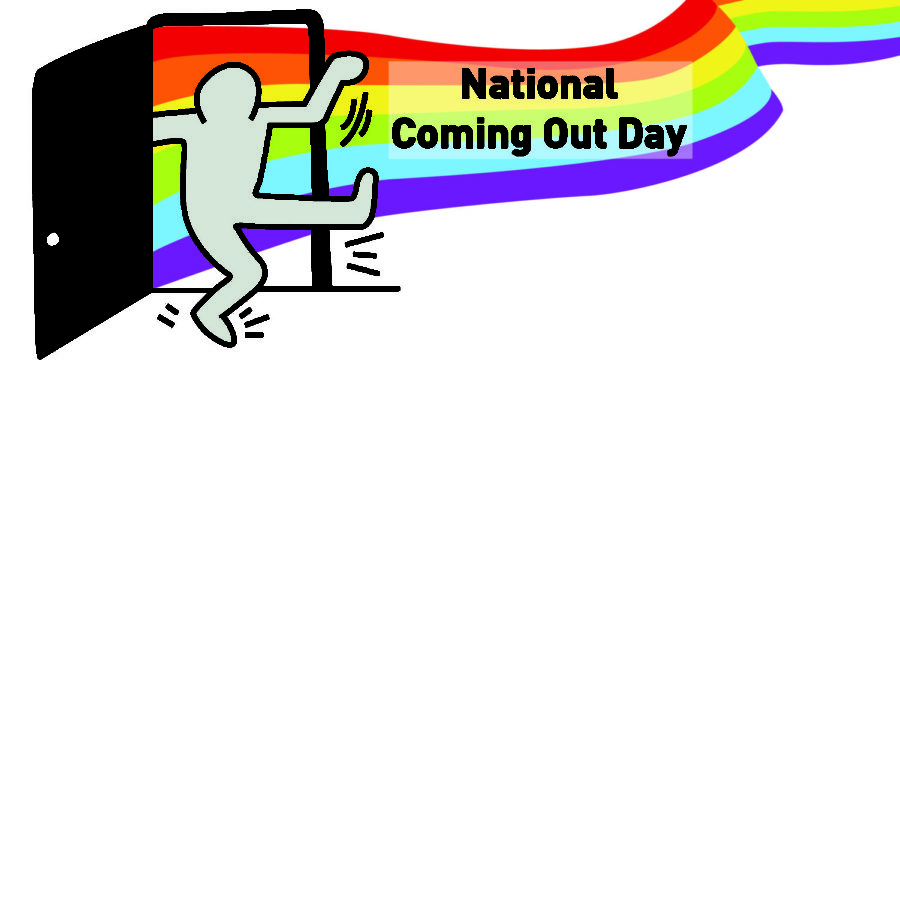Celebrating National Coming Out Day
October 11, 2020
Guys, gals and non-binary pals — Sunday was the 32nd celebration of National Coming Out Day.
The first National Coming Out Day in the United States was Oct. 11, 1988. This day was founded by Robert Eichsberg and Jean O’Leary to commemorate the anniversary of the 1987 March on Washington for Lesbian and Gay Rights, according to the Advocate. Since then, LGBTQIA+ people and allies have celebrated coming out and have brought awareness to the difficulties surrounding the process.
National Coming Out Day is observed in the U.S. as well as Ireland, Switzerland, the Netherlands and the UK, according to National Today.
Coming out is the act of someone making their once-hidden sexual or gender identity public. National Coming Out Day not only gives an opportunity for people to come out but it increases visibility for the LGBTQIA+ community. Increased visibility can help dispel stereotypes that people have against the LGBTQIA+ community by showing how they’re not much different than straight or cisgender people.
Half of all Americans can identify someone who is close to them as gay or lesbian, and 10 percent of Americans can identify someone who is close to them as transgender, according to the Human Rights Campaign. Though there has been more visibility and acceptance of the LGBTQIA+ community, there is still a long way to go, according to Brad Freihoefer, the director of the Center for LGBTQIA+ Student Success.
“There are many challenges to coming out, and some people may not be able to be out in the same ways as others right now,” Freihoefer said. “There are cultures and community spaces that maybe don’t allow everybody to have that same opportunity.”
Coming out may be the hardest thing someone will ever do. Most people think that ever since the United States legalized same-sex marriage, it has become easier to be open about one’s identity. In reality, coming out still matters, and it is still a difficult process. Freihoefer explained how it is imperative to remain engaged and aware of the problems LGBTQIA+ people face today.
“We have to get to know what is happening and to get connected with the history and understand different people’s experiences through sexuality and gender,” Freihoefer said. “We need to recognize the privilege of coming out but also acknowledge that it is still a process. National Coming Out Day gives us a chance to talk about all of those pieces.”
The Center also stressed how important it is for LGBTQIA+ students to have activities and events that are specifically for them and celebrate who they are. Celebrating National Coming Out Day shows that these individuals are important and that they matter — especially at Iowa State.
The festivities for National Coming Out Day at Iowa State were more limited this year due to COVID-19 restrictions. With social distancing and masks, the Center had an event last Friday where students could take a personalized pride photo. There were pride flags and message boards for students to show their personality and identity in their photo.
To help with the process of coming out, the Human Rights Campaign has compiled a series of guides to help closeted LGBTQIA+ people, or they can check out the Trevor Project’s Coming Out Handbook.
Though National Coming Out Day is not a well-known holiday, this day has allowed more people to come to know their LGBTQIA+ friends and family. It is a meaningful reminder of the process of coming out and something positive in the LGBTQIA+ community.
For LGBTQIA+ students at Iowa State looking for resources about this topic, they can find them at the Center’s webpage.

















